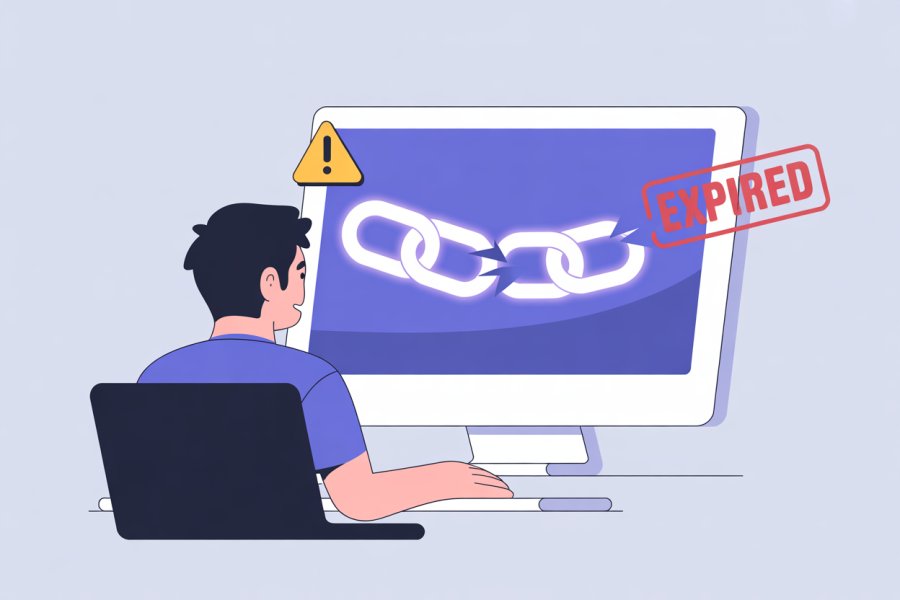
Are temporary backlinks from online marketplaces truly harmless, or do they secretly sabotage your long-term SEO success? While quick gains through these short-lived links may seem tempting, they often create a fragile foundation that quickly crumbles once the links disappear—typically within 30 to 60 days. These low-quality, automated, or paid links inflate metrics artificially but lack genuine relevance and trust, risking penalties from search engines that are increasingly adept at detecting manipulation. Relying on such tactics not only hampers sustainable growth but also damages your website’s credibility, leading to fluctuating rankings and eroded authority. Instead, building a resilient backlink profile through authentic, relevant, and high-quality links—earned via valuable content, industry relationships, and genuine outreach—ensures enduring visibility and trust. Are shortcuts worth the long-term costs? Wise SEO strategies prioritize patience and relevance over fleeting spikes, safeguarding your website’s future in a competitive digital landscape.

Introduction to Backlink Strategies: Building Credibility and Long-Term SEO Success
Backlinks are a core element of SEO, serving as digital endorsements that signal to search engines your website’s credibility and value. When reputable sites link to your content, it’s like receiving a vote of confidence, which can help improve your visibility in search results. Building a strong backlink profile is about more than just quantity; quality matters. High-quality, relevant backlinks from authoritative sources are the foundation of a resilient SEO strategy and can significantly boost your site’s ranking potential.
Not all backlinks carry the same weight. Some are naturally embedded within valuable content over time, known as permanent backlinks. These are earned through genuine efforts—creating useful content, forming relationships with industry peers, and gaining recognition from trusted sources. They tend to last for years and provide a steady stream of authority signals to search engines, supporting long-term growth.
In contrast, many SEO tactics focus on short-term gains through what are known as temporary backlinks. These links are often created using automated tools, link farms, or paid services that promise quick results. Typically, they are placed on low-quality or irrelevant sites, often in spammy sections like footers or comment areas, with the primary goal of inflating metrics such as domain authority or rankings temporarily. Once the short-lived campaign ends, these links are usually removed or become inactive, causing any initial boost to fade rapidly.
This reliance on temporary backlinks can be risky. They often give a false sense of progress, but they lack durability. Search engines are increasingly capable of detecting unnatural link patterns, and a sudden influx of low-quality, short-term links can trigger penalties or cause your rankings to drop. These links are frequently from domains with little or no organic traffic, making them suspect in the eyes of search engines and potentially damaging your site’s credibility over time.
Focusing on building a resilient backlink profile involves earning links through authentic, value-driven efforts. Creating high-quality content that others want to cite naturally, engaging in genuine outreach, and fostering real relationships within your industry all contribute to a stable, lasting backlink foundation. While this approach requires patience, it ensures your site gains a trustworthy reputation that can withstand updates and shifts in search engine algorithms.
Understanding the difference between permanent and temporary backlinks is crucial for sustainable SEO. Short-term schemes may seem tempting for quick wins, but they often undermine long-term stability. Investing in relevance and quality—rather than shortcuts—sets the stage for consistent growth and a credible online presence that endures market and algorithm changes.
Understanding Temporary Backlinks: Short-Lived Links Created for Quick Gains
Temporary backlinks are quite different from the stable, long-lasting links that form the backbone of a solid SEO strategy. Instead of being naturally embedded within relevant content, these links are typically created with a limited lifespan in mind. They’re often designed to disappear after a short period—usually between 30 and 60 days—serving a quick purpose rather than contributing to long-term authority.
Most of these backlinks are generated through automated tools, link farms, or paid services that promise rapid SEO improvements. They are frequently placed on low-quality or irrelevant websites, often in footer sections, comment boxes, or hidden areas that search engines might overlook. The goal is to inflate metrics like domain authority or rankings temporarily, without investing in genuine, organic link-building efforts.
These links are usually produced in bulk using software that distributes them across numerous low-authority sites. While this approach minimizes effort, it sacrifices relevance and quality. Because they’re often placed on spammy or unrelated sites, search engines tend to see these links as suspect. Their primary purpose is to create a quick spike in SEO metrics, not to build lasting trust or authority.
The lifespan of these backlinks is deliberately short. Once the campaign or set timeframe ends, the links are often removed or become inactive. Vendors frequently delete or replace these links to reuse domains for other clients, which means the initial boost in authority or rankings tends to fade quickly. This rapid disappearance makes them attractive for short-term gains but dangerous for long-term SEO stability.
These short-lived links are typically created automatically, prioritizing quantity over quality. While they might give an immediate ranking boost, their relevance is minimal, and they lack the trust signals search engines look for. Search engines like Google can often detect unnatural link patterns, especially if a flood of low-quality, short-term links appears suddenly, raising red flags.
Recognizing the typical lifespan of these backlinks helps you spot potential red flags. A sudden influx of links from irrelevant or low-quality sites suggests a short-term scheme. Relying on such links may result in penalties or ranking drops once search engines catch on. Building a durable backlink profile means focusing on relevance, quality, and organic growth instead of short-lived tactics.

Sustainable Backlink Practices: Earning Trustworthy, Long-Lasting Links
Building a resilient SEO foundation means prioritizing backlinks that are both durable and relevant. Unlike quick fixes that depend on fleeting schemes, sustainable links are earned through genuine effort and strategic relationship-building. High-quality backlinks come from sites that share your industry or niche, signaling to search engines that your website is a trusted authority. These links are naturally embedded within valuable content, providing ongoing support for your site’s credibility over time.
Relevance is key. When backlinks originate from reputable sources within your sector, they carry more weight because they serve as endorsements from peers. Instead of chasing large quantities of low-quality links, focus on securing placements on trusted sites that align with your content. This approach makes your backlinks more meaningful and resistant to the constant changes in search engine algorithms.
Creating content that others want to cite is a powerful way to attract high-quality links organically. Thoughtful guides, original research, or insightful articles that genuinely add value tend to become reference points for industry peers. These assets act as magnets, drawing relevant backlinks without the need for manipulative tactics. Building authentic relationships through guest posting, collaborations, or industry interviews further enhances your backlink profile, making it more natural and trustworthy.
Consistency in publishing relevant, high-value content is essential. Regular updates signal to search engines that your site remains a reliable source of information. Over time, this steady stream of quality content encourages other websites to link to your work, reinforcing your authority. As your reputation grows, so does your ability to attract meaningful backlinks, creating a positive cycle of trust and recognition.
Avoid shortcuts like buying cheap backlinks or participating in link schemes. Instead, invest in a long-term strategy focused on earning genuine links through real engagement. While this process takes patience, it results in a stable backlink profile that can withstand algorithm updates and market shifts. These high-quality links form the backbone of a credible online presence, supporting sustained growth and visibility.
Engaging with industry influencers and forming authentic partnerships can significantly boost your backlink profile. Genuine collaborations not only generate high-quality links but also expand your reach and credibility within your niche. These relationships are harder for competitors or search engines to dismiss, further strengthening your site’s authority.
In the end, building a resilient backlink profile requires patience, persistence, and a focus on relevance. The effort invested in earning trustworthy, high-quality links pays off by creating a solid foundation that supports consistent rankings and long-term success. This approach ensures your website remains credible, resistant to SEO fluctuations, and positioned for sustainable growth in a competitive landscape.
Consequences of Relying on Temporary Backlinks: Risks to Your SEO Stability
Relying on temporary backlinks can severely undermine your overall SEO efforts. While they might offer a quick boost in rankings, the gains are often fleeting. Once these short-lived links disappear—usually after 30 to 60 days—the authority they temporarily provided vanishes as well. This creates a pattern of sudden rises and sharp declines that can make your site appear unstable and manipulative to search engines. Over time, this inconsistency can damage your credibility and trustworthiness in the eyes of algorithms designed to detect unnatural link behavior.
These fleeting links do little to build genuine trust signals. Instead, they inflate metrics artificially, giving a false impression of authority. When the links are removed, your site’s perceived value drops just as quickly. This cycle of artificial growth followed by rapid decline can erode your site’s reputation, making it harder to recover from subsequent ranking drops. Search engines are becoming increasingly sophisticated at spotting these manipulative tactics, and relying on them can trigger penalties or algorithmic filters that harm your long-term visibility.
Many temporary backlinks originate from low-quality or irrelevant sources, such as link farms or spammy websites. These links often lack contextual relevance, which search engines prioritize when assessing link value. An influx of such short-term links signals manipulation rather than genuine endorsement, increasing the risk of penalties or deindexing. The short lifespan of these links means your site’s authority is built on a fragile, unstable foundation that’s prone to crumbling when search engines catch on.
Focusing on short-term schemes also distracts from establishing a solid, authentic backlink profile. Instead of earning links through valuable content and real relationships, you depend on quick fixes that provide no lasting value. As these links fade, your overall authority can plummet, leaving your long-term SEO strategy compromised. This instability leads to fluctuating rankings, frustrating both site owners and visitors and diminishing your site’s credibility over time.
The volatility created by dependence on temporary backlinks results in inconsistent search rankings. Sudden drops can reduce traffic, harm conversions, and damage your site’s reputation. Over time, this cycle erodes trust with your audience and makes it more difficult to maintain a stable online presence. The more you chase quick wins through short-lived links, the more you risk sacrificing the stability and credibility essential for sustainable growth.
In the end, relying heavily on temporary backlinks is a risky game. It might seem tempting to chase quick results, but the long-term consequences—penalties, reputation damage, and unstable rankings—far outweigh any short-term benefits. Building a credible, resilient SEO foundation requires investing in high-quality, relevant backlinks earned through genuine effort. This approach creates a durable, trustworthy online presence that can withstand algorithm updates and market shifts, ensuring your website’s authority and visibility remain strong over time.

Conclusion and Recommendations: Prioritizing Quality for Lasting SEO Results
Relying on temporary backlinks might seem like an easy shortcut for quick SEO gains, but the risks often outweigh the benefits. These short-lived links can create an illusion of authority, only to vanish after a few weeks or months, leaving your website’s credibility and rankings fragile and unstable. Search engines are becoming more adept at recognizing manipulative link patterns, and overusing such tactics can trigger penalties or cause your rankings to plummet unexpectedly. Building a strong, lasting SEO foundation requires focusing on high-quality, permanent backlinks from relevant sources.
Genuine efforts like creating valuable content, fostering relationships with industry influencers, and engaging in authentic outreach lead to backlinks that last and support sustained growth. These links are more meaningful in the eyes of search engines and more resistant to algorithm changes, helping your site maintain trustworthiness over time. Avoid shortcuts like buying cheap backlinks or participating in link schemes—these often come from low-quality, irrelevant sites and can do more harm than good, risking penalties and reputation damage.
Instead, invest in earning backlinks through real engagement and relevance. Focus on producing content that naturally attracts citations, such as comprehensive guides or original research, and build authentic relationships within your industry. Patience is key; sustainable SEO is a long game. While it takes more effort upfront, the stability and credibility gained will pay dividends in the long run. A resilient backlink profile built on trust and relevance can withstand algorithm updates and market shifts, securing your site’s authority and visibility.
Be wary of vendors who avoid transparency about the longevity of their links. If they refuse to guarantee permanence or sidestep questions about how long links will last, that’s a strong warning sign of short-term, unstable schemes. Prioritizing genuine, relevant backlinks over quick fixes is not just smarter—it’s essential. Long-term success in SEO depends on building a credible, authoritative presence that endures the evolving landscape of search engine algorithms.
Ultimately, SEO isn’t about chasing immediate wins but cultivating consistent, organic growth. Earning high-quality backlinks through patience and persistence creates a solid foundation that supports stable rankings and a trustworthy reputation. This approach may require more effort initially, but it safeguards your website’s authority, ensuring your efforts translate into sustained visibility and long-term success. Avoid the trap of short-lived gains and focus instead on building a credible, resilient online presence that can thrive in a competitive environment.


